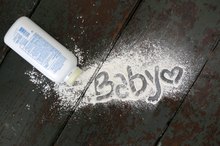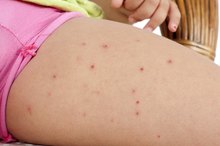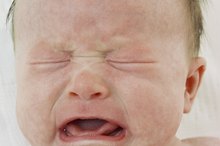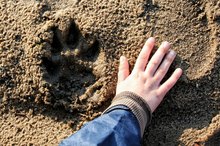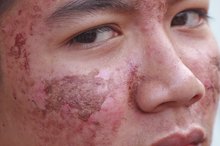Face Rashes & Cold Weather in Children
Children are frequently exposed to many viruses, illnesses and irritants that can trigger a facial rash. Cold weather can cause or exacerbate a facial rash, especially if the temperature and elements are extreme. Understanding what can cause a facial rash in cold weather can help you decide how to treat and prevent it.
Symptoms and Definition
A child’s cold weather facial rash can vary from mild to severe. Extreme temperatures can trigger or worsen these rashes. They can develop anywhere on the face, including the cheeks, nose, forehead and scalp. A rash also can occur on a child’s stomach, chest, arms and back. Besides a rash, a child can experience a fever, cold-like symptoms and muscle aches.
- A child’s cold weather facial rash can vary from mild to severe.
- A rash also can occur on a child’s stomach, chest, arms and back.
Causes
Red Bumps on Babies' Skin
Learn More
The wetness caused by a child drooling, licking his lips or experiencing a runny nose can break down the top layers of his skin, especially when exposed to cold and windy air, and cause a facial rash. Cold weather, wind or friction from a scarf or coat can chap a child’s facial skin. Frostnip, a less severe form of frostbite, can develop if your child is exposed to cold temperatures. Heat rash can occur if your child is bundled up and becomes over heated. Some medical conditions and illnesses, such as eczema, fifth disease or roseola also can trigger a facial rash in cold weather 2.
- The wetness caused by a child drooling, licking his lips or experiencing a runny nose can break down the top layers of his skin, especially when exposed to cold and windy air, and cause a facial rash.
- Frostnip, a less severe form of frostbite, can develop if your child is exposed to cold temperatures.
Remedies and Prevention
Wash your child’s face with lukewarm water to moisturize and soothe a facial rash. Rub a thin layer of petroleum jelly, calamine lotion, hydrocortisone cream or a thick moisturizer over your child’s face to help soothe itching and redness. If your doctor approves, give your child the appropriate dosage of Benadryl. Avoid future facial rashes by limiting the amount of time your child is exposed to cold weather and wind. Keep your child’s face protected from the elements with a loose fitting scarf or high collar.
- Wash your child’s face with lukewarm water to moisturize and soothe a facial rash.
- Rub a thin layer of petroleum jelly, calamine lotion, hydrocortisone cream or a thick moisturizer over your child’s face to help soothe itching and redness.
Dangers
Jock Itch in Children
Learn More
Contact a pediatrician if your child’s facial rash is extremely bothersome, lasts for more than four weeks, does not subside even with treatment or is accompanied by facial warmth, pustules, blisters or a fever. These could be signs of a serious infection or illness such as the herpesvirus. If possible, do not allow your child to scratch at her facial rash, no matter how itchy it is. Scratching can cause scaring and infection.
- Contact a pediatrician if your child’s facial rash is extremely bothersome, lasts for more than four weeks, does not subside even with treatment or is accompanied by facial warmth, pustules, blisters or a fever.
Related Articles
References
- KidsHealth.org; Eczema; October 2008
- AskDrSears.com: Fifth's Disease
- AskDrSears.com: Rashes
- "Parents" magazine; Protecting Baby's Skin in the Winter; Wendy Toth and Rebecca Felsenthal; February 2009
Writer Bio
Rose Erickson has been a professional writer since 2010. She specializes in fitness, parenting, beauty, health, nutrition and saving money, and writes for several online publications including The Krazy Coupon Lady. She is also a novelist and a mother of three.


